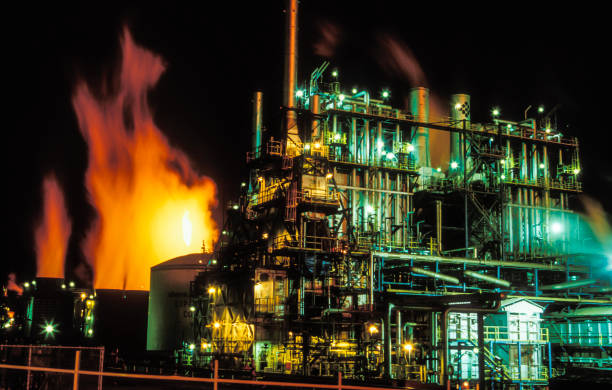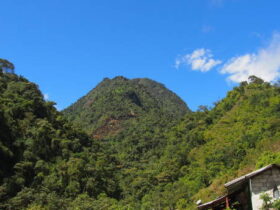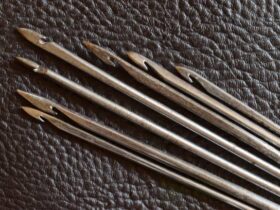Introduction
When someone hears about Zulia, their mind often drifts to the colossal Lake Maracaibo, lively gaitas music, or the long-standing oil traditions that shaped the region. But tucked away in an area known as Punata Camacho lies something that rarely makes it into the headlines: the Planta fluidos de perforación en Punata Camacho Edo. Zulia.
This plant, while perhaps not flashy to the casual observer, plays a pivotal role in the drilling sector, keeping operations efficient, safe, and technically feasible. After all, what’s an oil well without drilling fluids to cool, lubricate, and stabilize the borehole? Exactly—nothing more than a deep, problematic hole.
In this article, we’ll take a walk through the story, significance, and broader implications of this plant. From understanding what drilling fluids even are, to unraveling the socio-economic threads that tie Punata Camacho’s community to the oil industry, it’s going to be an eye-opener. Ready? Let’s dive in.
The Beating Heart of Drilling: Why Fluids Matter
Before we zoom into Punata Camacho, let’s set the stage.
Drilling fluids—commonly called muds—are mixtures used during oil and gas drilling to:
-
Cool and lubricate the drill bit (no one likes overheating, right?).
-
Transport rock cuttings to the surface.
-
Maintain hydrostatic pressure to prevent well blowouts.
-
Stabilize the wellbore walls, reducing the chance of collapse.
Without these fluids, modern drilling would be nearly impossible. And managing them isn’t as simple as pouring some goo into the ground. It’s a science. That’s where specialized plants like the one in Punata Camacho enter the picture.
The Planta Fluidos de Perforación en Punata Camacho Edo. Zulia
Location, Location, Location
Nestled in the oil-rich state of Zulia, Punata Camacho might not be a buzzing metropolis, but its strategic location gives it significance. Zulia is practically synonymous with petroleum, and any facility aiding extraction automatically becomes part of the backbone of Venezuela’s economy.
The Planta fluidos de perforación en Punata Camacho Edo. Zulia stands as both a technical installation and a symbol of how localized efforts support a global industry.
What Happens Inside?
Inside the plant, engineers, chemists, and technicians work together to:
-
Formulate drilling muds for specific geological conditions.
-
Recycle and treat fluids after use, reducing waste.
-
Test and adjust viscosity, density, and chemical properties to match well requirements.
-
Supply operators in nearby oilfields with ready-to-use fluid systems.
It’s essentially part science lab, part factory, and part environmental checkpoint.
The Human Element: Punata Camacho’s Community
While industry outsiders may just see pipes, tanks, and chemical formulas, locals view the plant as a source of livelihood. Generations of Zulians have been tied to oil in one way or another, and this facility is no different.
-
Jobs: From operators to truck drivers, the plant provides employment in an area where opportunities can sometimes feel scarce.
-
Skill development: Workers often receive training in fluid dynamics, chemical handling, and safety protocols.
-
Community programs: Some plants engage in CSR initiatives like sponsoring local schools or healthcare activities.
But let’s be real—it’s not always a perfect picture. Alongside benefits, challenges like pollution concerns, dependency on oil, and socio-political instability linger in the background.
Challenges the Plant Faces
Environmental Pressures
Oil drilling fluids can be environmentally messy. If not properly handled, they risk contaminating soil and water. In a region where Lake Maracaibo already battles pollution, adding more strain isn’t ideal.
Economic and Political Climate
Venezuela’s broader economic crisis trickles down to facilities like this one. Issues such as:
-
Delayed maintenance
-
Scarcity of imported chemicals
-
Unstable power supply
… all affect productivity at the Planta fluidos de perforación en Punata Camacho Edo. Zulia.
Global Market Shifts
Fluctuations in oil prices on the world stage also impact local operations. When prices fall, budgets shrink. And when budgets shrink? Plants face the heat.
Innovations on the Horizon
Despite hurdles, innovation refuses to stand still. Engineers are pushing for:
-
Eco-friendly drilling fluids made from biodegradable components.
-
Automation and AI-driven monitoring to optimize fluid properties in real time.
-
Waste management upgrades to recycle fluids more efficiently.
Punata Camacho’s plant, if supported, could become a hub for experimenting with such technologies in Venezuela.
Broader Implications: Why This Plant Matters
At first glance, one might think: “It’s just a mud plant, so what?” But zoom out a little, and the bigger picture emerges:
-
National Economy: Venezuela heavily depends on oil exports. Every support facility—like this one—ensures wells keep producing.
-
Local Stability: Jobs mean income, and income means stability for families.
-
Global Relevance: Oil remains a critical energy source worldwide, making each plant part of a larger puzzle.
FAQs about Planta Fluidos de Perforación en Punata Camacho Edo. Zulia
Q1: What exactly does the plant produce?
It produces and manages drilling fluids used in petroleum exploration and production. These can be water-based, oil-based, or synthetic, depending on the geology.
Q2: Is the plant environmentally safe?
Efforts are made to treat and recycle fluids, but like many industrial sites, risks exist if standards aren’t strictly followed.
Q3: How does the plant affect the local economy?
It provides direct jobs, contracts for service providers, and indirectly supports small businesses around Punata Camacho.
Q4: Can drilling fluids be eco-friendly?
Yes! Research is ongoing globally, and some plants already test biodegradable fluids to reduce environmental harm.
Q5: Why is Zulia important in the oil industry?
Zulia, with Lake Maracaibo at its heart, has been the cradle of Venezuela’s oil industry for over a century.
Conclusion
The Planta fluidos de perforación en Punata Camacho Edo. Zulia is more than a collection of steel tanks and pipelines—it’s a microcosm of the challenges, opportunities, and paradoxes that define Venezuela’s oil industry. It sits at the crossroads of technology and tradition, serving as both a provider of vital drilling fluids and a symbol of local resilience.
In Punata Camacho, the plant embodies how small communities are intertwined with global energy networks. Yes, it battles economic hardship and environmental concerns, but it also holds the seeds of innovation and community strength.
So, next time you hear about Zulia’s oilfields, don’t just picture oil rigs silhouetted against Lake Maracaibo’s sunset. Remember the unseen backbone—the fluid plants like the one in Punata Camacho—that quietly make it all possible.








Leave a Reply